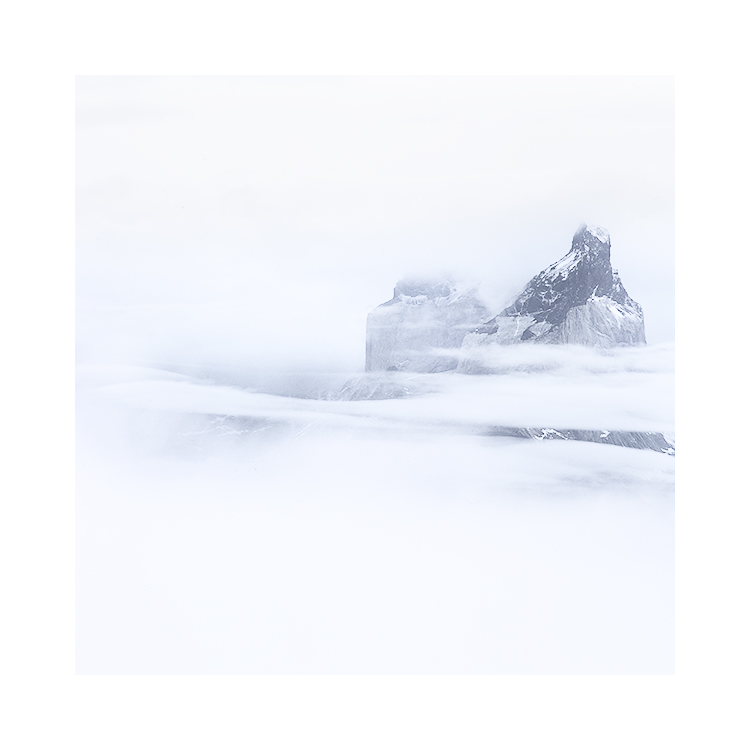I love bad weather, snow storms, rain and fog. Temperature inversions are also pretty neat.
Most times that I am in Torres del Paine national park in Chile, we tend to see a temperature inversion from one particular viewpoint in the park. This year, we saw it happen on two consecutive days, but it is often so fleeting that on the second visit, I almost made the decision to keep driving as there seemed to be nothing special happening. But the clouds came in thick and fast and it wasn’t long before the entire valley below us was hemmed in with a thick cloud.
My guide Sabine and some of the group participants from this year’s Patagonia tour.
As you can see from the group photo above, the cloud was below us. It acted like a ‘sea’ in some respects. And it kept changing over the course of the hour or so that we were there.
I made a series of shots using a telephoto lens and a 2x converter for my Hasselblad film camera. I had the equivalent of a 250mm lens on, and sometimes I used a combination of 2x and 1.4 converters stacked together to get in close to the peaks of the Cuernos (horns) of the Paine massif.
Being highly selective on what you choose to put in the frame is of course one of the key points in composition. So too, is what we choose to leave out. It would have been so tempting for me to make vista wide shots of the valley with the entire range peaking out of the sea of cloud, but I chose instead to narrow right into what I consider the ‘signature’ shapes of the Torres range.
I was also attracted to the whispy, flowing s-curved shapes of the clouds as they moved horizontally across the frame. I felt these would add a degree of ‘elegance’ or ‘simplicity’, to add compositional flow to the shots.
There’s a tendency to dream up in one’s head what I’d like to see. In my mind’s eye, I was hoping for a shot like the one below, where perhaps the clouds would part at such a point and show me just the central part of the signature region of the Torres mountains. I did get the shot, but as you can see - it’s quite grainy. I love this grainy effect, but it’s really caused by me pushing the contrast extremely hard in the edit to try to bring out the mountains. They were very very faint in the original transparency.
Working in low visibility is advantageous. It’s also a guessing game and can lead to many many surprises.
I often feel that most of us are uncomfortable with images that are vague, unclear, or just lead too much to interpretation. Coupled with that, there is often a tendency to stress the point. If we feel something is nice, we tend to exaggerate it for fear that others don’t see what we saw.
Being able to edit images to still maintain a degree of subtlety is hard. But if you can pull it off, it probably signifies that you’re more confident, less likely to try to stress the point to your audience. You trust in knowing that the photograph is as strong as it needs to be, and that your viewer may not need to be hand-held through viewing it as much as you would have tried to do in the past.
Working with vague, undefined, hidden landscapes is wonderful for this. Besides, I’ve always enjoyed a story that gives me room for my own interpretation.




